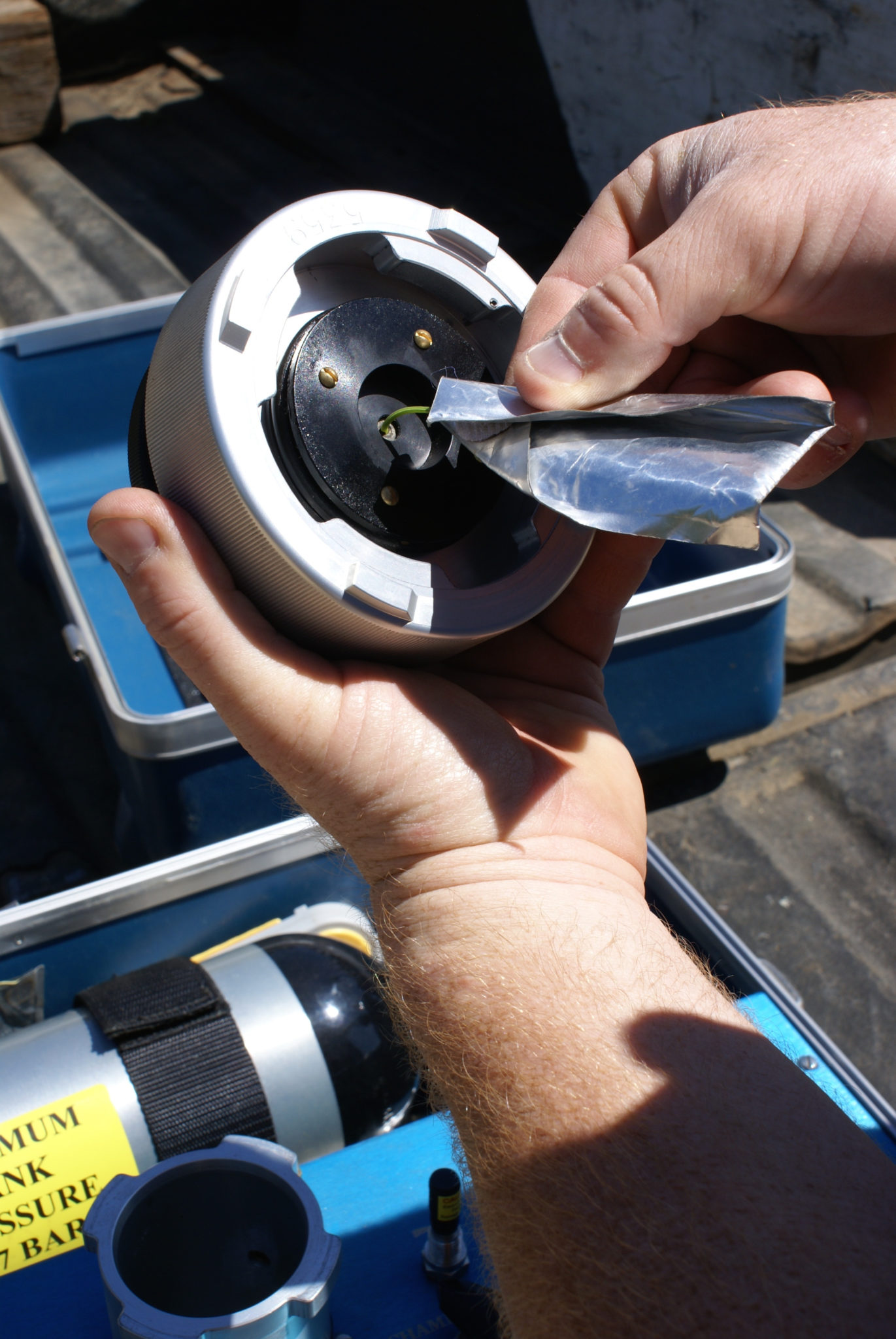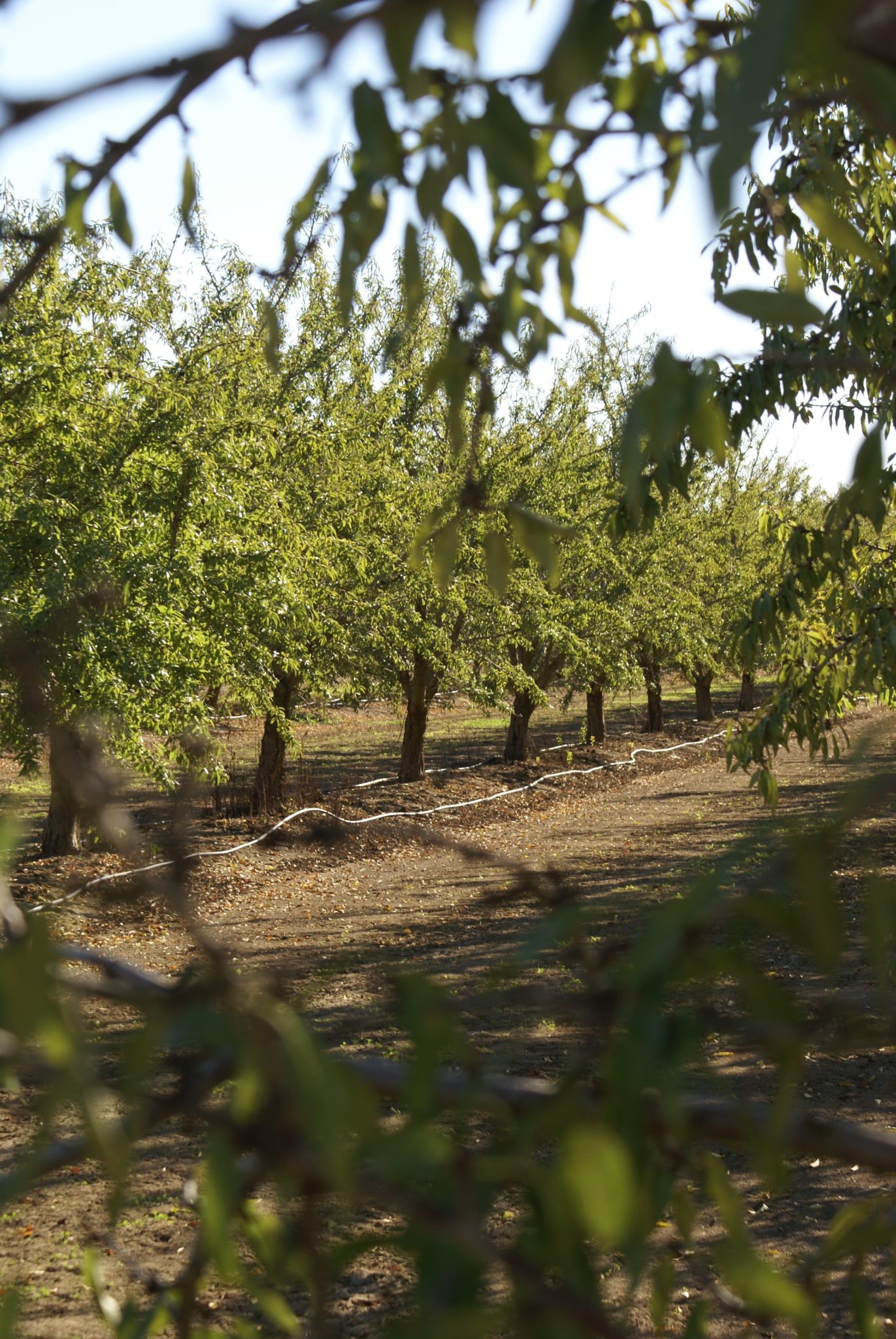Planned deficit irrigation and balanced nitrogen applications have been proven to reduce the incidence of hull rot in almonds. Inducing moderate water stress at the right stage of nut development along with cutting off pre-harvest nitrogen applications are cultural methods of reducing hull rot infections.
Phoebe Gordon, UCCE orchard crops farm advisor in Madera County recently reported that while there are effective fungicides that can be applied to reduce the severity of hull rot, nitrogen and irrigation management at the right time can help reduce the disease in an orchard. The UC IPM web site includes almond fungicide registration and efficacy tables with the appropriate timing to apply the material.
Hull rot is an infection of almond hulls caused by the fungal pathogens Rhizopus stolonifer and Monilinia spp., and Aspergillus niger. When almond hulls begin to split, the pathogen invades and colonize hull tissues. Infected nuts can become sticktights at harvest and if not removed can become navel orange worm overwintering sites. Infection of the hull can also result in death of the spur and attached shoot, and may affect next year’s yield depending on the severity of the disease in the orchard, leaving less viable bearing surface on the tree. Some growers have reported that Aspergillus infection can lead to staining of the kernel and reduction of nut quality. Hull rot caused by Monilinia causes a tan lesion on the outside of the hull. This symptom is hard to see once hulls dry.
The most susceptible varieties are Nonpareil, Sonora and Winters. Monterey has relatively low susceptibility relative to Nonpareil, Sonora and Winters.
Mohammad Yaghmour, UCCE farm advisor in Kern County, said other factors that can contribute to severity of the disease in individual orchards include dust and over fertilization with nitrogen.
“Every year is different in regard to severity of this disease. It is important to manage nitrogen in the orchard by following the nitrogen management plan and avoid over-fertilization along with following proper irrigation practices. Previous research had shown that over fertilization increases disease incidence in the orchard. However, applying regulated deficit irrigation (RDI), allowing moderate stress to the trees, significantly reduce the incidence of the disease.” Yaghmour said.
Well irrigated and fertilized trees are more susceptible to hull rot because the plant tissue is more vulnerable to infection.
According to UC’s Drought Management for Almonds, leaf out is a time of rapid vegetative growth that leads to establishment of fruiting positions and carbohydrate reserves for future needs. Fewer daylight hours and relatively cooler temperatures in the spring mean water demand may be met by soil water stored in the root zone.
Well-timed Irrigation Deficit
Post kernel fill through 90 percent hullsplit is the target time for regulated deficit irrigation. Research has shown that hull rot can be reduced by moderate water stress during this phase of nut development without affecting crop quality. This roughly three week period depends on the season and almond variety along with weather patterns.
Almond Board of California reports that a 10- to 20-percent reduction in applied water will be needed, but must correspond to individual orchard soil type and environment.
Robert Smith, a crop consultant with UltraGro, said deficit irrigation in combination with nitrogen management keeps hull rot infections low. Orchards where humidity is high, with susceptible varieties can be the hardest hit with hull rot. Moderate stress is the goal. Excessive stress will also lead to sticktights as well as defoliation. Prior to harvest, full irrigation can be done. Post harvest stress is not recommended.
Determining the right amount of water to achieve moderate stress can be done several ways.
Pomology Farm Advisor Roger Duncan, UCCE Stanislaus County, said a pressure bomb is the preferred tool for determining tree stress and timing regulated deficit irrigation. This tool applies pressure to a severed leaf and stem inside an airtight chamber. The pressure required to force water out of the stem is shown on an external gauge. There is also a protocol to follow for timing and selecting leaves for sampling (watch for a more detailed article on using pressure bombs coming in the September issue of West Coast Nut.)
Prior to hullsplit, almond trees should be maintained between -6 to -10 bars. During the RDI period, stress levels should be maintained at -14 to -18 bars. Post-RDI, trees should be fully irrigated to reduce stress prior to harvest.
Growers and farm managers also have the option of using evapotranspiration data from weather stations and crop coefficients to determine how much water trees are using.
Micro irrigated trees can be reduced to 50-percent ET for 3 to 4 weeks depending on the speed of hullsplit In flood irrigated orchards; the dry period can be extended 4 to 5 days longer than normal. This should be done for two irrigation cycles, but Duncan warns that flood irrigated trees can go from moderate stress to severe stress in a short period of time.
Using soil moisture sensors to determine tree water stress may result in over or under irrigation when soil types vary across an orchard.
There are also visual and timed strategies for RDI. Deficit irrigation can begin when the first blanks begin to split. Noting soil variations, variety of tree and growing region can help with timing of the regulated irrigation strategy.
Regulated deficit irrigation should begin sooner in heavy soils with more water holding capacity. Growers and farm managers also must be mindful of fertilization schedules.
Growers can be ‘in the ballpark’ of initiating moderate stress by reducing their normal irrigation by around 50 percent. An orchard getting four inches a week in early June can be cut back to 2 to 2½ inches for that three week period, Smith said.
Cutting back irrigation further can result in shriveled kernels and tree defoliation. Trees that enter the post kernel fill to 90-percent hullsplit stage under stress will not benefit from regulated deficit irrigation.
The key to successfully managing hull rot through cultural practices is to manage stress at the right time to reduce incidence while protecting the crop.

















